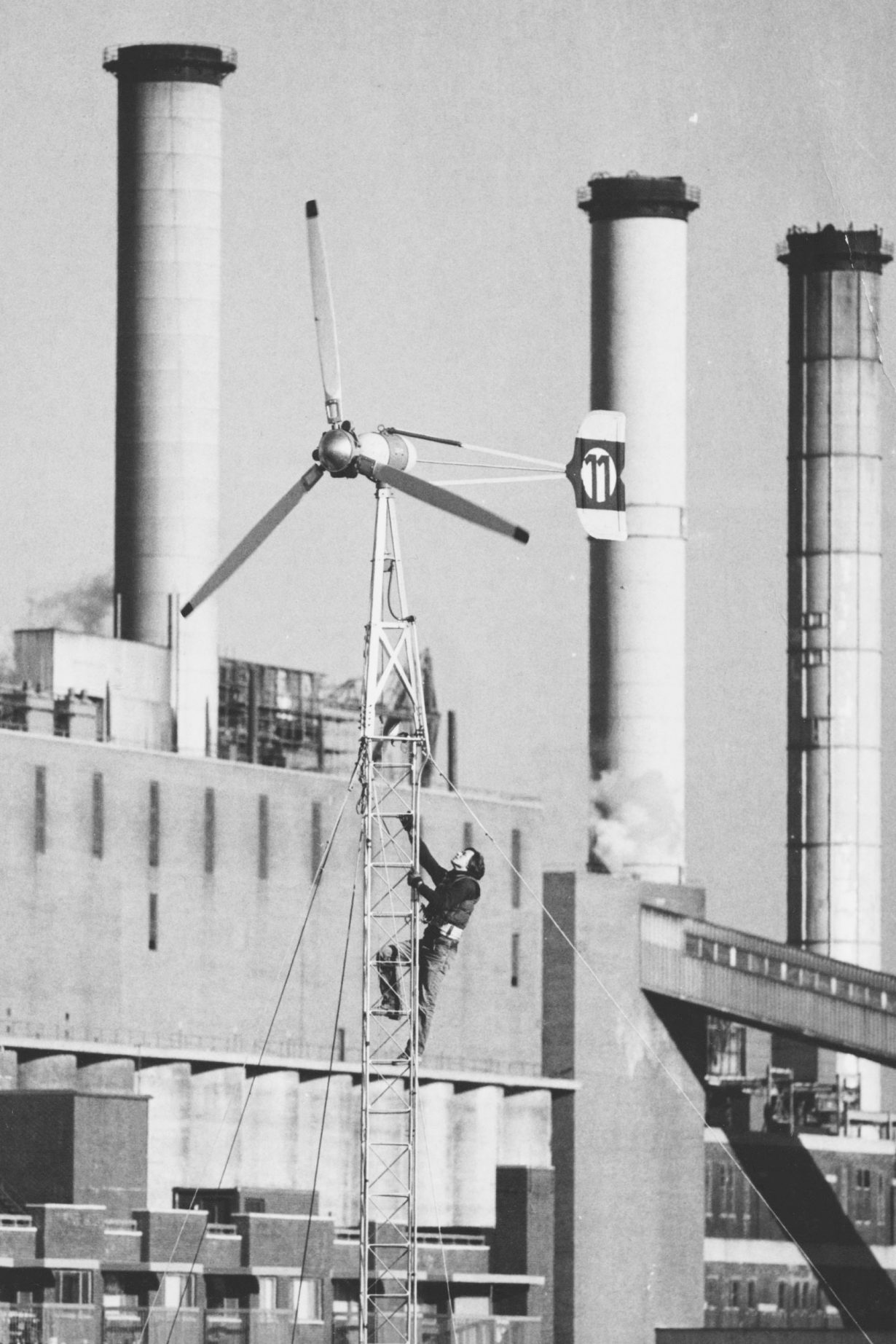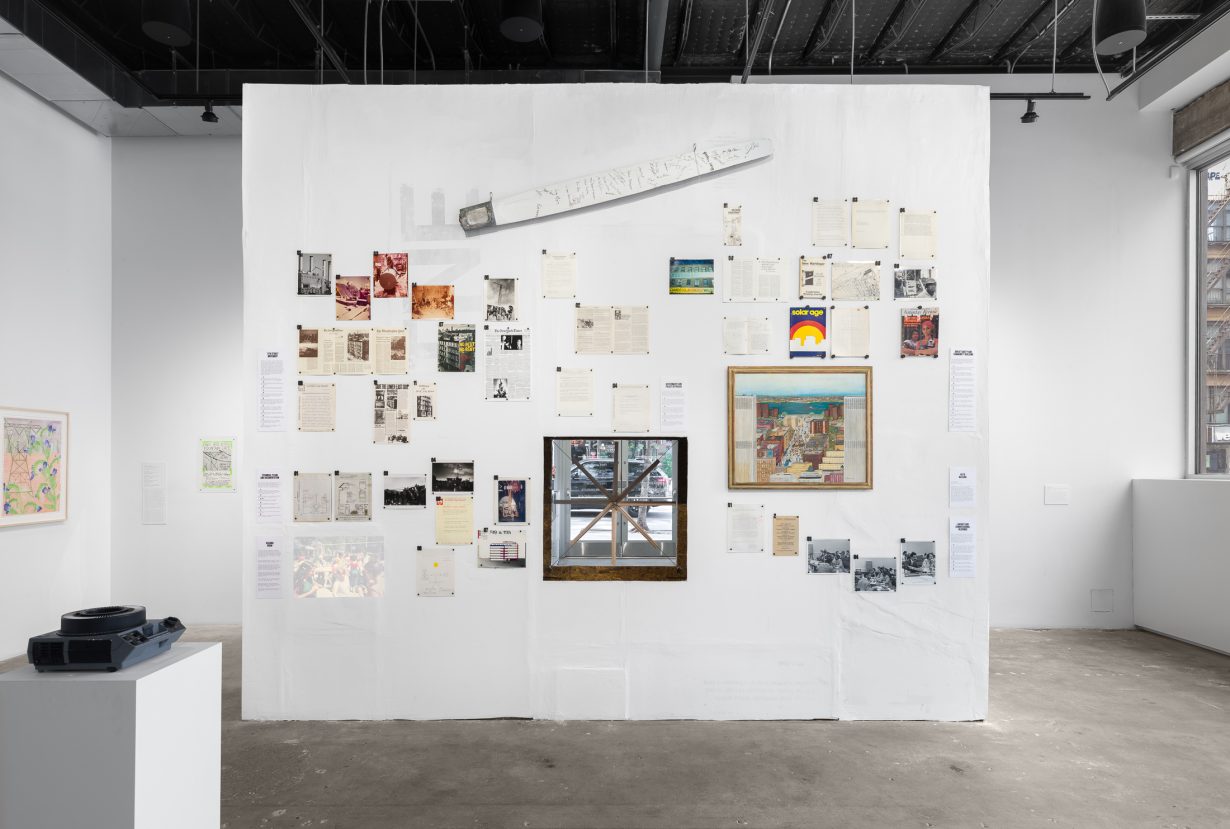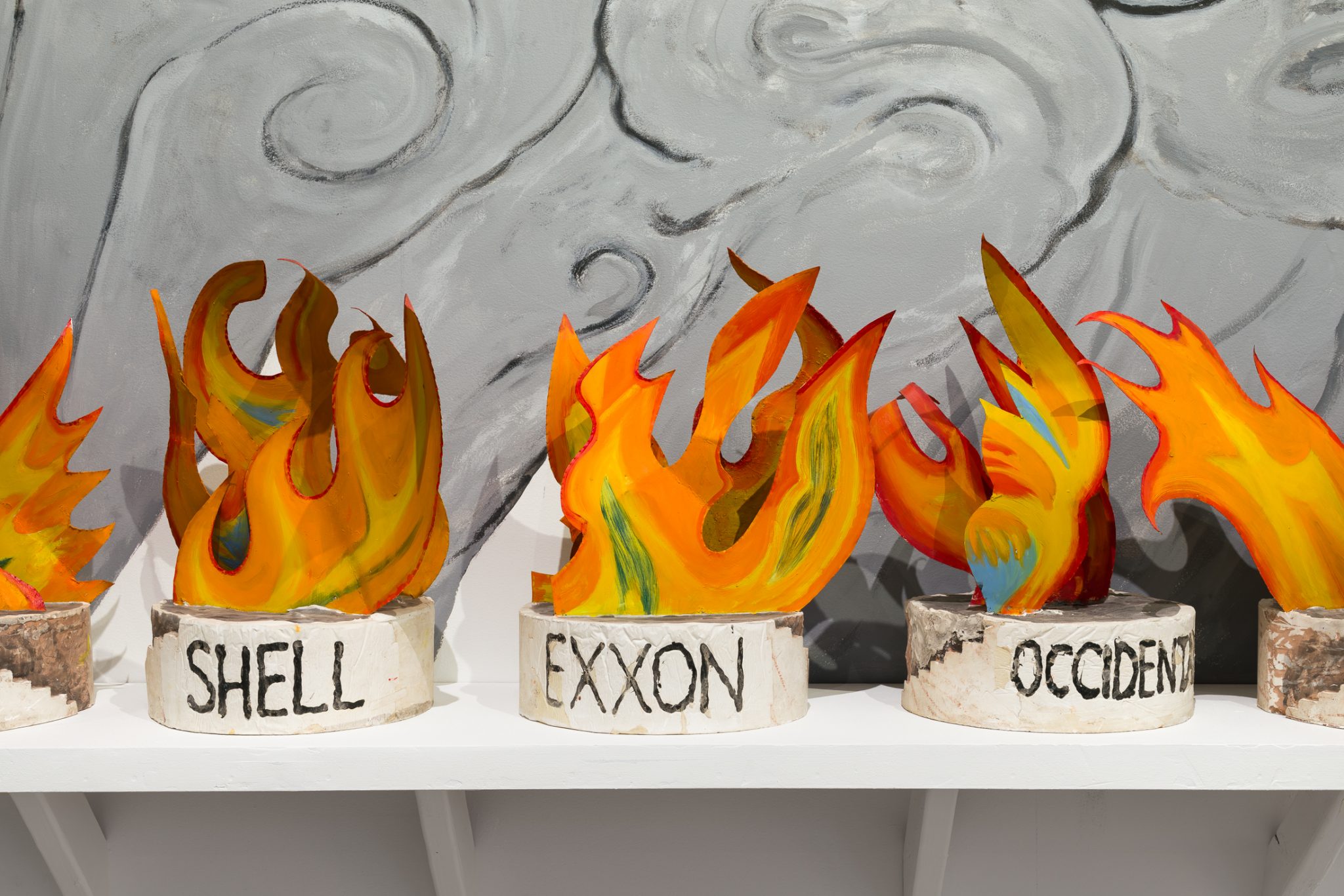A new show at Swiss Institute, New York explores energy’s political, ecological and social uses – as a resource and weapon
In a photograph from 1976, a wind turbine rises over New York’s Lower East Side neighbourhood. A young technician scaling its scaffold gazes up at its delicate blades, like an airman making sure his ride doesn’t take off without him. The turbine, operated by a grassroots organisation called the 11th Street Movement, stood atop its sweat equity co-op at 519 E 11th Street, feeding energy back into the grid. Looming in the background of the photo are the smokestacks of Con Edison, a utility giant that was at the time locked in a legal battle against the co-op, whose improbable victory, due in part to support it received from a former attorney general, lies at the heart of Energies. The exhibition at Swiss Institute places a newly assembled archive that documents the historic wind turbine in dialogue with contemporary art that explores energy’s political, ecological and social uses.
Throughout the 1970s, the largely Puerto Rican and working-class inhabitants of the Lower East Side fought to stave off real estate speculation and displacement. Energy was a resource and weapon in their multifront war against landlords who forced residents out by neglecting boilers in winter and ignoring fires that ravaged entire blocks. Symbols of DIY power and community-built architecture became a key part of local movements’ visual language. Among the historical ephemera displayed on the exhibition’s first floor, a 1982 painting by activist and 11th Street resident Ruth Nazario shows the neighbourhood streets from a bird’s-eye view. Between the two World Trade Center towers in the city’s imposing financial hub, a brightly dressed crowd gathers around a geodesic dome – a reference to the structures actually built by the Nuyorican community group CHARAS during the early 1970s. In a suite of 1980s watercolours nearby, Becky Howland, cofounder of the art and activism centre ABC No Rio, shows wildflowers and weeds engaged in a David-and-Goliath struggle against power plants and toxic waste barrels.


In the more recent works, a DIY aesthetic refracts through complex global stories of disruption, extraction and extinction. From a small room opposite the 11th Street ephemera, a battery on a pallet jack – Vibeke Mascini’s Instar (3.9 kWh) (2024) – releases an ozone scent charged by burnt cocaine confiscated at an international shipping point. Up above, Haroon Mirza’s sci-fi-inspired solar panels, Oscillations for Caduceus (2024), power his rooftop sound installation and the refrigerator housing Ash Arder’s Consumables (11092024) (2024), a car key-shaped piece of shea butter, on the second floor. Arder’s installation references the collapse of the American automobile industry and, like many other works on view, considers the negative ramifications of the green energy industry.
Twenty-first-century energy is mutable, mired in supply chains that mystify exploitation and pain, so ecological awareness becomes increasingly urgent and commensurably elusive. A battery in Agnieszka Kurant’s Living Currency (2014) stores the power generated when visitors open a gallery door, a microcosmic gesture of capture that points both to the possibilities of utilising our own excesses and to the anxiety of unbounded systems of exchange. Who will use that energy next, and for what?
Gordon Matta-Clark’s Energy Tree drawings (1970–75) embody the exchange between the utopianism of the 1970s and the ambivalence of contemporary morphologies. Dots of colour zoom around the pages like Nazario’s vividly clad Lower East Siders. In one drawing, the activity of the mass appears to be organised organically along roots. In another, bright ink sprays across the page like atoms exploded by a particle accelerator. The scribbly diagrams are simultaneously coherent and incoherent, caught between certainty and doubt. This tension germinates in Energies, which reveals less about the resources humans consume than about human resourcefulness itself.
Energies at Swiss Institute, New York, through 5 January
From the November 2024 issue of ArtReview – get your copy.
